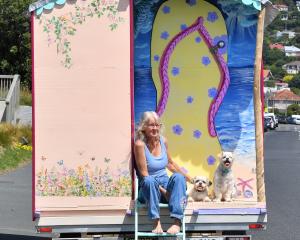Department of Conservation marine ranger Jim Fyfe said Doc was seeing increased numbers of blue penguins in Otago Harbour because of the success of the predator control measures at the Taiaroa Head colony.
The survival of penguin chicks had increased significantly because of the decline in predators.
He said the penguin in the Steamer Basin was a little unusual because it did not seem to follow the normal behavioural patterns of blue penguins.
When in their natural habitat, they head out to sea to feed, and only come ashore under the cover of darkness.
It is not known what brought the little blue penguin to the Steamer Basin, but Mr Fyfe believed it had taken up residence there because the food supply was good.
It had obviously become accustomed to the food it was receiving from fishermen, he said.
The penguin also appeared to be living in alternative accommodation.
During the hours of darkness, blue penguins come ashore and live underground in burrows, Mr Fyfe said.
"We're not sure where this one goes.
"There are lots of places under the wharves where it could go to hop out of the water. That may be where it goes at night," he said.
Doc has been keeping a close eye on the penguin after being notified by concerned members of the public that anglers were using fishing nets in an attempt to catch the penguin.
While feedback from some fishermen was that the penguin had become hooked a couple of times and it should be moved on, others saw it as an "upper harbour identity" and enjoyed its presence there.
Dunedin resident Peter Tuisano fishes from the pontoon almost every day, and said the penguin had never given him any trouble.
"We quite enjoy her company. If we saw anyone mistreating her, we would tell them off," Mr Tuisano said.
Mr Fyfe discouraged fishermen from feeding the penguin, as he hoped the penguin would return to its natural habitat.
"If they don't feed it ... it is obviously what encourages it to come up about the [fishing] lines."
Mr Fyfe said the penguin seemed to be quite happy and was not causing any particular problems, so Doc had decided to monitor the situation before making a decision on its future.
"If it proves to be an ongoing problem, we'll consider moving it, but it could come straight back."
Mr Fyfe advised people who came upon the penguin to leave it alone, but to call Doc if they accidentally caught it on a line, then gently remove it and put it back in the water.
LITTLE BLUE PENGUIN
Known in Maori as korora
• The world's smallest penguin.
• They stand 25cm tall and weigh about a kilogram.
• Found in many places around New Zealand and Southern Australia.
• They only come ashore under the cover of darkness and live underground in burrows.
• Although they are quite common, its small size and unusual habits make it rarely seen.












